My Work
My work is fundamentally about amplifying the body's innate capacity for efficient, graceful, and powerful posture and movement. This general description applies to a wide variety of issues and goals.
I work hands-on to reduce and transform the patterns that cause strain, pain, and limitation and I guide clients to manage their posture and movement efficiently and easily.
Some of my clients arrive feeling frustrated with the way their recurring, chronic, or worsening problems haven't yet been adequately understood as part of a larger pattern. Others are curious about how they could develop a new way of being and moving in their bodies—to feel upright and strong without strain.
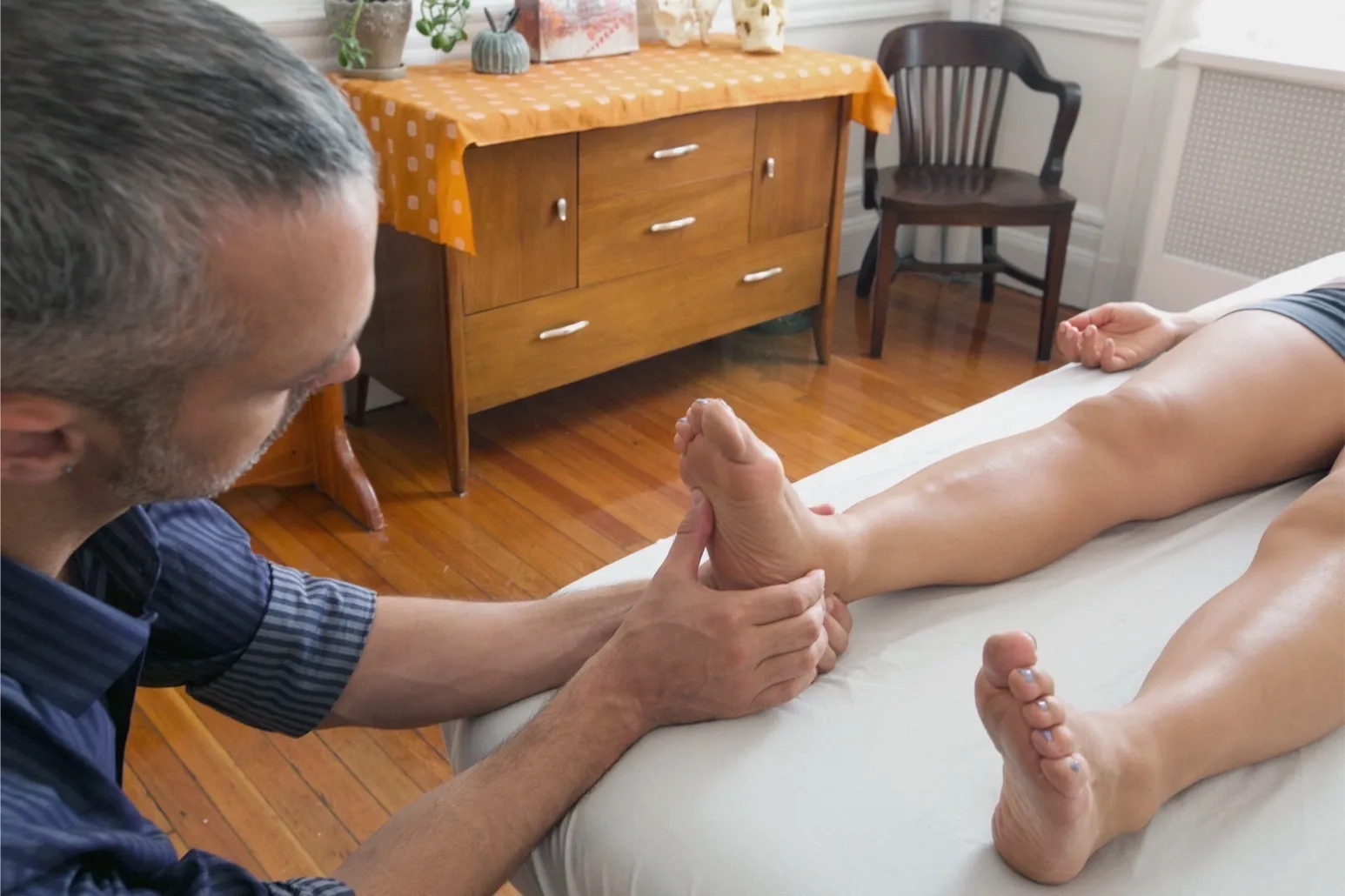
I love to work with both perspectives simultaneously—to help people find lasting relief, and to help them use their bodies in a new way. Fundamentally, these are two aspects of the same process.
Working with patterns
I work with structural and functional patterns that shape the body and its capacities for stability and movement:
structural relationships mediated through the fluid and fascial systems of the body (spine and all other joints, organ relationships, musculoskeletal and myofascial patterns, and more)
functional relationships (neuromuscular patterns, posture, and spatial awareness, post-traumatic responses, and more)
These two fields inform and reinforce each other: Our movement patterns and habits of awareness produce structural patterns in our bodies, and our body structure guides and limits the ways in which we are able to move and perceive ourselves in relationship with the world around us.
Modalities
I integrate several modalities, chiefly Structural Integration (SI), craniosacral therapy, and visceral manipulation, along with various ways of working with posture, coordination, and neuromuscular patterns.
My primary training is in Structural Integration (SI)—I'm a Certified Advanced Rolfer®. SI is designed to change the way the body organizes itself, from the little details affecting single joints, muscles, and organs, to the overall postural relationships of the whole body. In doing so, it treats many of the causes of pain, strain, and misalignment in the body.
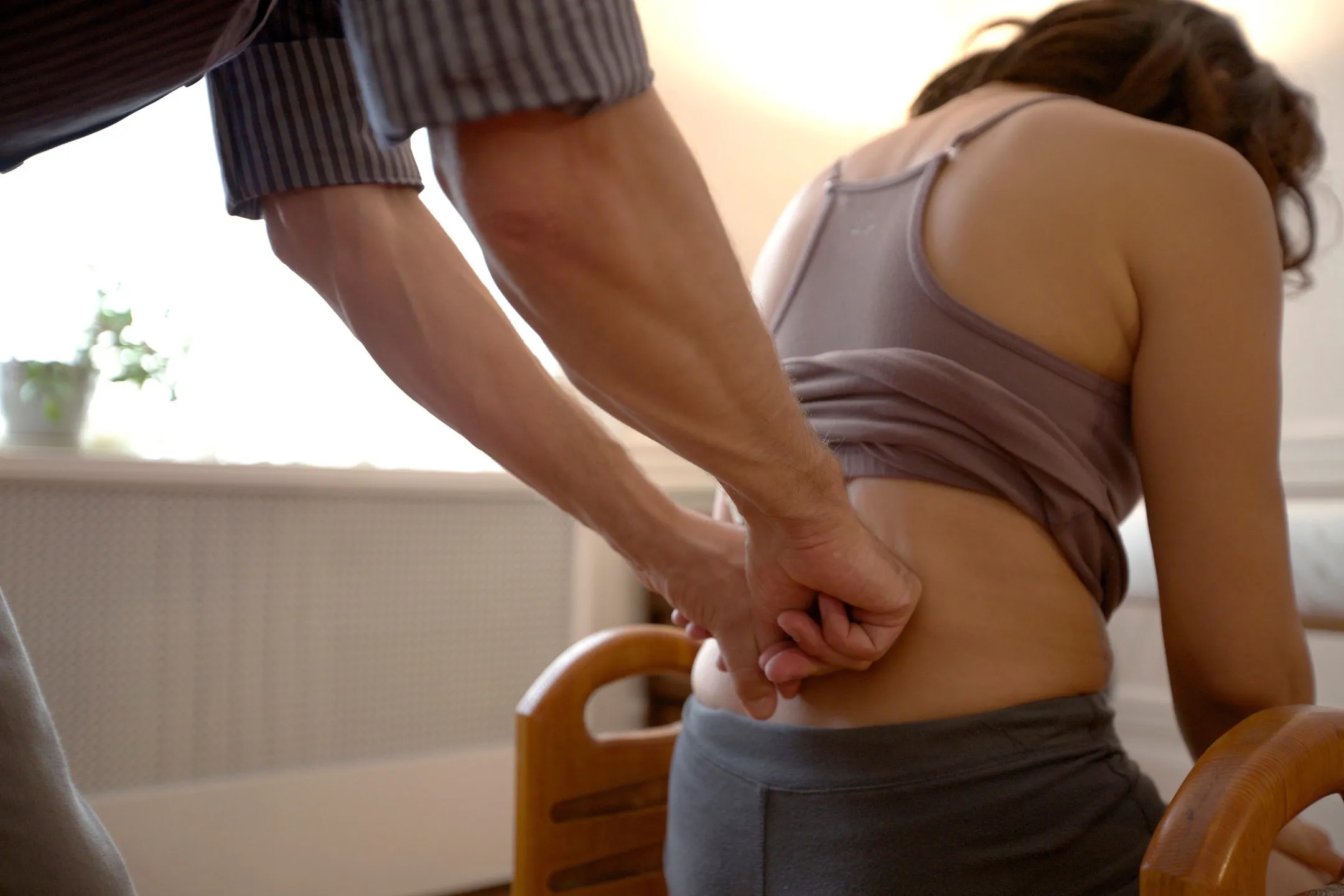
Craniosacral therapy and visceral manipulation add breadth to the spectrum of therapeutic touch. Craniosacral therapy is a mode of manual therapy that amplifies fluid movements perceivable in the tissues of the body that are associated with its capacity for self-organization and healing. Visceral manipulation works with the structural and fluid relationships among the organs, affecting their function as well as having a powerful impact on posture and musculoskeletal function.
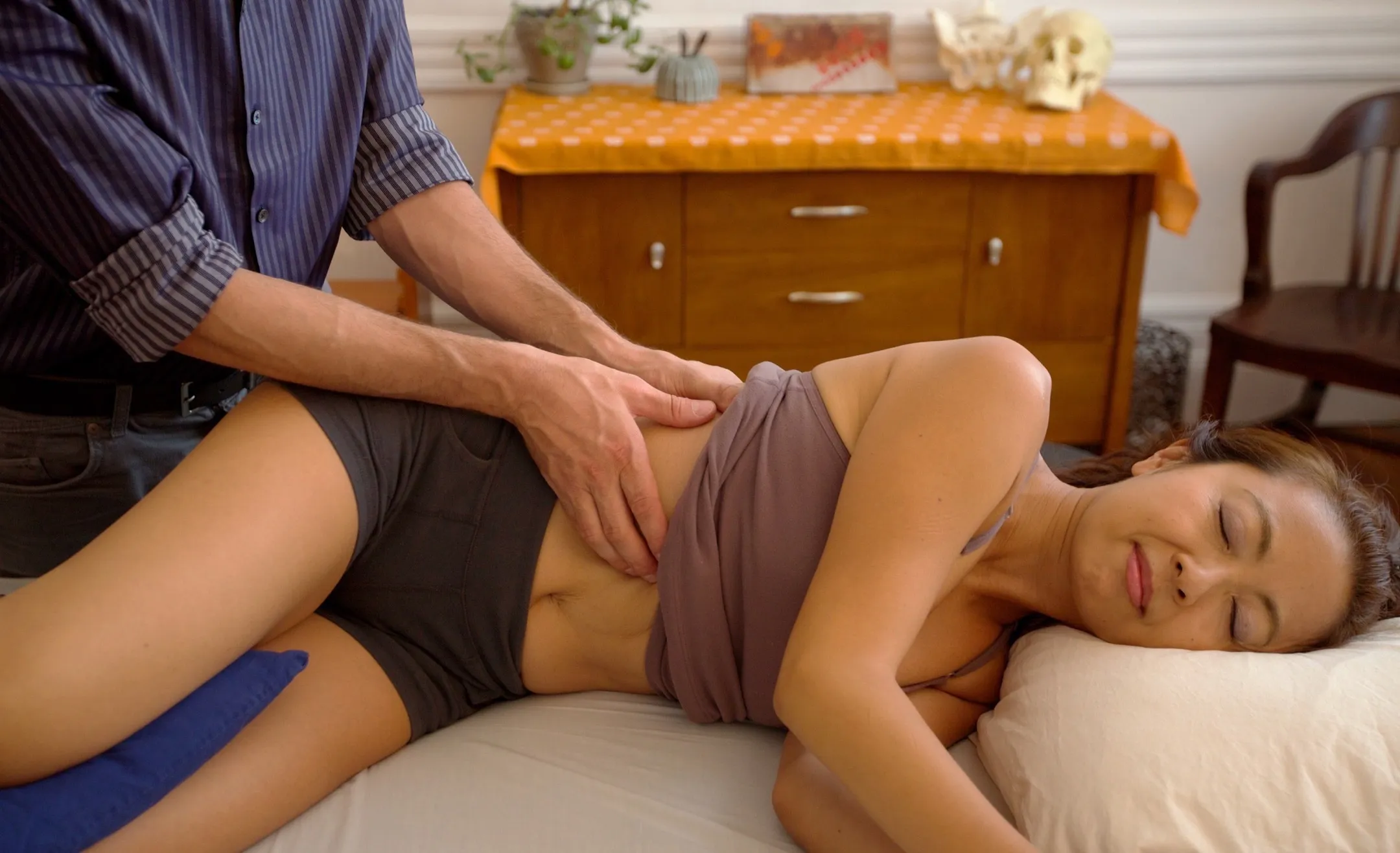
Posture and movement training and education is a means for helping clients sense, use, and maintain changes in their bodies. Many people, through no fault of their own, are stuck in a "just try harder" approach to improving the way execute movement or manage posture. I take great pleasure in helping people discover that there is a whole range of posture and movement patterns available to them at any given moment. Precise cues and sensory feedback help more easeful and efficient patterns take root.
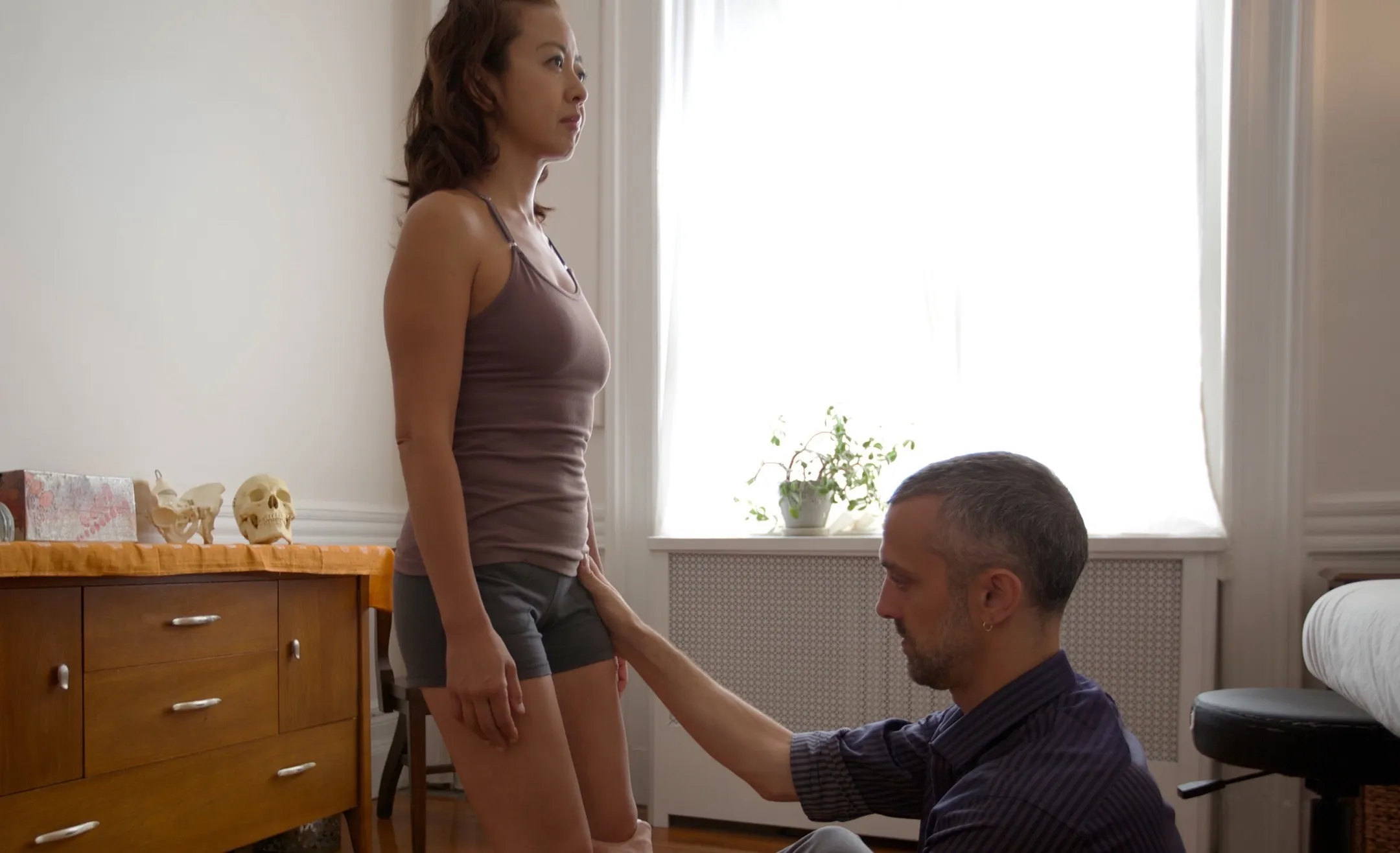
Course of Treatment
Bodies are complex, and the patterns by which they organize involve multiple systems, tissue types, and regions. They naturally reinforce themselves, which means that supportive structural and movement patterns tend to stick. It's thanks to this that sessions can produce long-lasting changes for clients.
It's also thanks to this self-reinforcing nature of patterns in the body that it can take some time to produce change. Anyone familiar with psychotherapy or other inner work has experienced the way difficult patterns frequently reassert themselves, and the same is true for our bodies: Trauma, overuse, injury, habit, and compensation can entrench complex patterns in the structure and coordination of our bodies. It can take some time to change them.
It's important to enlist other factors that can help to accelerate progress. Clients who are willing to explore and practice new postural and movement movement will find their bodies will be more responsive and adapt more quickly. Incorporating movement practices and other forms of treatment when appropriate can be invaluable. I'm careful to take the opportunity to suggest methods or practitioners I think would be helpful to each client.
As far as my work goes, a single session almost always produces noticeable changes, but it usually takes a series of sessions to produce a lasting shift. Committing to two to three sessions allows most people to get a clear indication that they're experiencing real progress. I can sometimes give a general estimate for how quickly or slowly a client might expect the change they're seeking, but it depends on so many factors that vary between individual cases.
(Structural Integration sessions have traditionally been organized in a series of 10 sessions—"The Ten Series" or "The Recipe"—and three to five followups—"The Advanced Series". In my practice, I treat this series as one available option for clients who request it, but I typically work outside of that strict format.)
The pace and direction of treatment is always up for discussion. I aim to serve the needs and goals of each person, uniquely.
Planning for Sessions
What to Wear
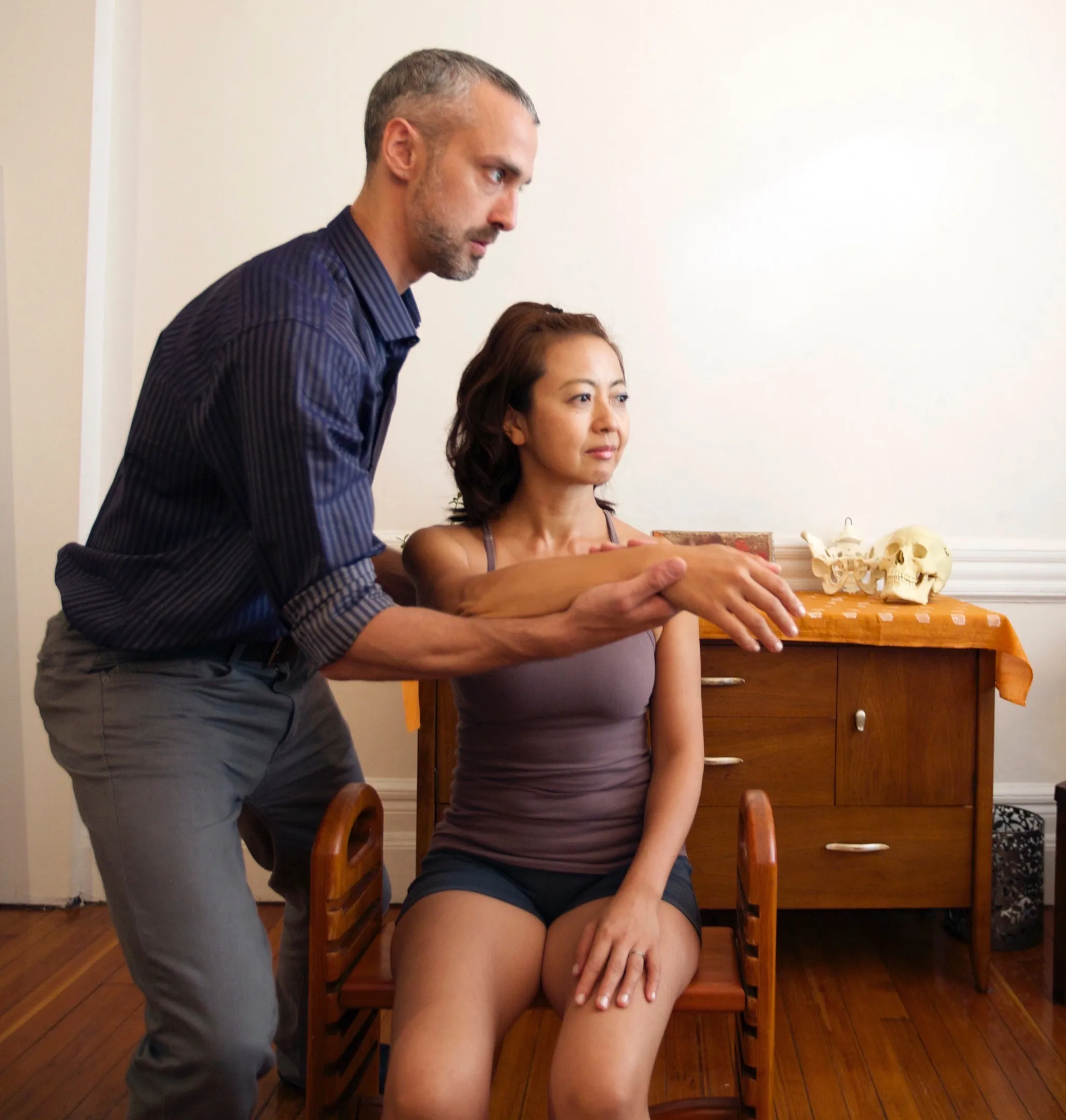
You won't fully undress as you may be used to doing for massages.
Most clients wear minimal clothing (such as running shorts or underwear and, for women, tank top or bra) that they are comfortable being seen in, since it allows for easier assessment and better contact. Some people prefer to be more covered, and that’s fine too: I can work through clothing fairly easily. In those cases, loose-fitting, thinner fabric is best.
Timing and Frequency
Sessions are an hour. I leave time between clients and on occasion, if the work calls for it, we may go a few minutes longer. You may wish to plan accordingly.
Sessions can be spaced a few days to a few weeks apart. We look for a balance between continuing progress and allowing the body and brain to settle into the changes in each session.
What to Expect
When you come in for a first session, I'll spend some time with you learning about your goals, medical history, needs, and questions.
Sessions typically begin and end with a few minutes of visual assessment, where you’ll sit, stand, walk around the room, or do other basic movements. This allows us to track what's changing over the course of your treatment. It's also an opportunity to discover and practice new postural and movement patterns.
If you have a condition for which touch is contraindicated, please let me know and consult with your doctor. My work can range from strong pressure to very gentle, and can be very effective anywhere in that range.
Payment and Insurance
Sessions are $200. I do not offer package discounts.
I offer a limited number of discounted sessions per week for those that otherwise could not afford my work. Please contact me to discuss your situation if that applies to you.
HSA's and FSA's
Some clients use their HSA or FSA to pay for sessions. Please contact your provider and verify that Rolfing, Structural Integration, and/or massage therapy are approved for spending from your account.
If you will need a detailed receipt for documenting your HSA or FSA spending, please notify me in advance of your session.
Insurance
If your insurance covers your sessions, you’ll pay out of pocket and have your insurance reimburse you. I can provide you with receipts to submit to your insurance company for reimbursement.
If you plan on using insurance to cover the costs of your sessions, please call your insurance, verify your coverage, and let me know in advance your needs.
Check with your insurance company whether they cover Rolfing®, Structural Integration, craniosacral work, or massage therapy. Insurance that covers massage therapy also covers my work, since I am licensed as a massage therapist. Clients who are recovering after an automobile accident usually find that their auto insurance covers massage therapy. However, it is generally rare that health insurance plans will cover this work.
If you are planning on having your sessions reimbursed by your insurance, be sure to check whether a doctor’s prescription will be required.
Cancellation Policy
Please be mindful that I have a limited number of appointments available by making cancellations and rescheduling with at least 24 hours notice. If you have an illness or emergency, contact me so a decision can be made about rescheduling your appointment.
You are responsible for 50% of my regular session fee for cancellations made less than 24 hours in advance. You will not be charged if I am able to fill the slot with another appointment. If you miss your appointment without contacting prior, you are responsible for the full session fee.